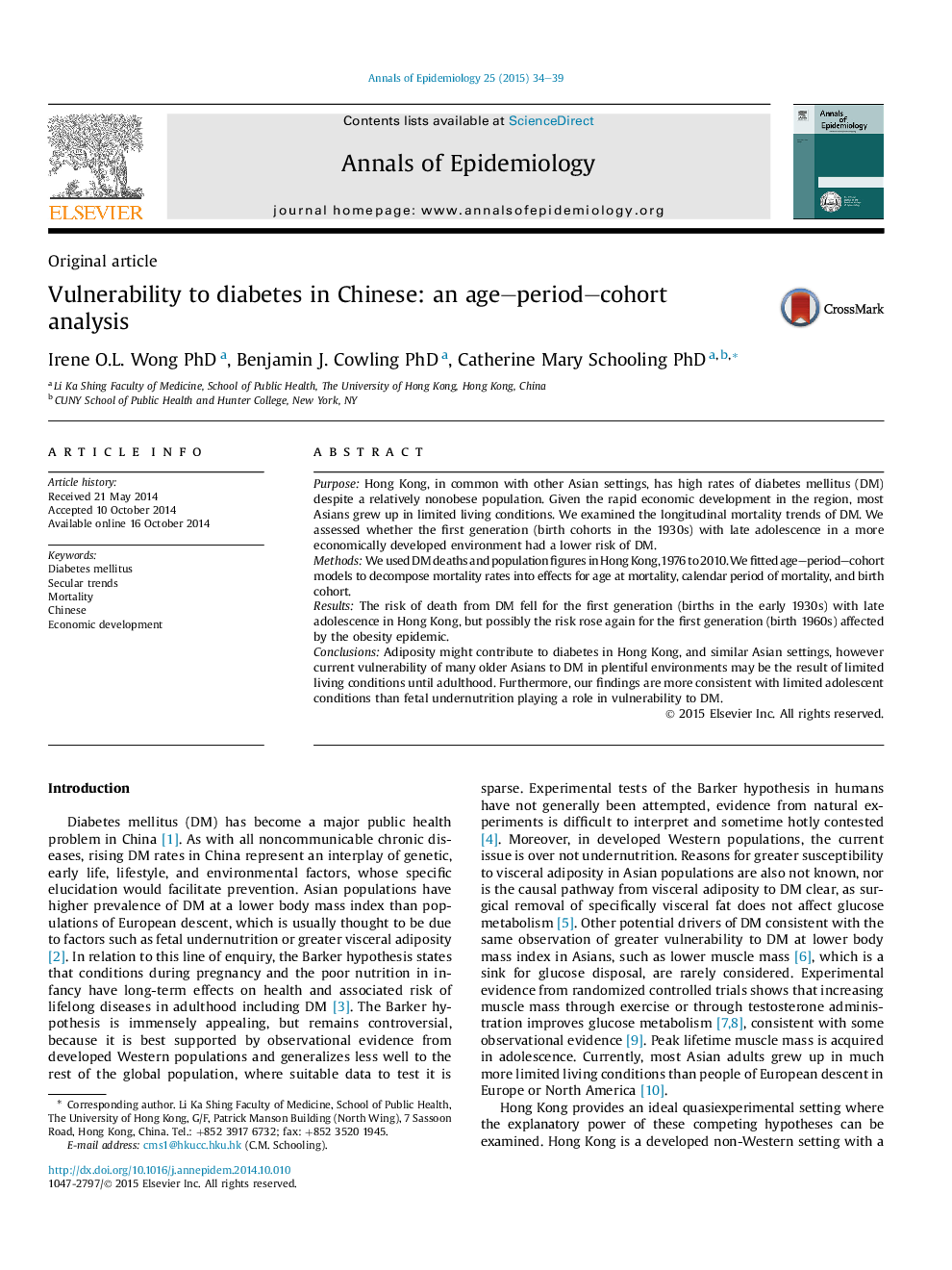| Article ID | Journal | Published Year | Pages | File Type |
|---|---|---|---|---|
| 3443753 | Annals of Epidemiology | 2015 | 6 Pages |
•Asian populations have higher prevalence of diabetes mellitus than populations of European descent despite a relatively nonobese population.•The Barker hypothesis states that conditions during pregnancy and the poor nutrition in infancy have long-term effects on health and associated risk of diseases in adulthood including diabetes.•We observed that the risk of death from diabetes fell for the first generation (births in the early 1930s, with limited fetal conditions) with late adolescence in Hong Kong. But the risk rose again for the first generation (birth ∼1960s, with less restricted fetal conditions) affected by the obesity epidemic.•Coupling these observations with our quasiexperimental setting in a Chinese population, we speculate these relate, respectively, to a more plentiful late adolescent environment experienced by the 1930s birth cohorts resulting in lower susceptibility to diabetes and to higher levels of childhood obesity experienced by the 1960s birth cohorts resulting in higher levels of diabetes.•Our findings are more consistent with limited adolescent conditions than fetal undernutrition playing a role in vulnerability to diabetes. The findings might also underscore the well-known role of lifetime over nutrition in diabetes in China as elsewhere.
PurposeHong Kong, in common with other Asian settings, has high rates of diabetes mellitus (DM) despite a relatively nonobese population. Given the rapid economic development in the region, most Asians grew up in limited living conditions. We examined the longitudinal mortality trends of DM. We assessed whether the first generation (birth cohorts in the 1930s) with late adolescence in a more economically developed environment had a lower risk of DM.MethodsWe used DM deaths and population figures in Hong Kong, 1976 to 2010. We fitted age–period–cohort models to decompose mortality rates into effects for age at mortality, calendar period of mortality, and birth cohort.ResultsThe risk of death from DM fell for the first generation (births in the early 1930s) with late adolescence in Hong Kong, but possibly the risk rose again for the first generation (birth 1960s) affected by the obesity epidemic.ConclusionsAdiposity might contribute to diabetes in Hong Kong, and similar Asian settings, however current vulnerability of many older Asians to DM in plentiful environments may be the result of limited living conditions until adulthood. Furthermore, our findings are more consistent with limited adolescent conditions than fetal undernutrition playing a role in vulnerability to DM.
